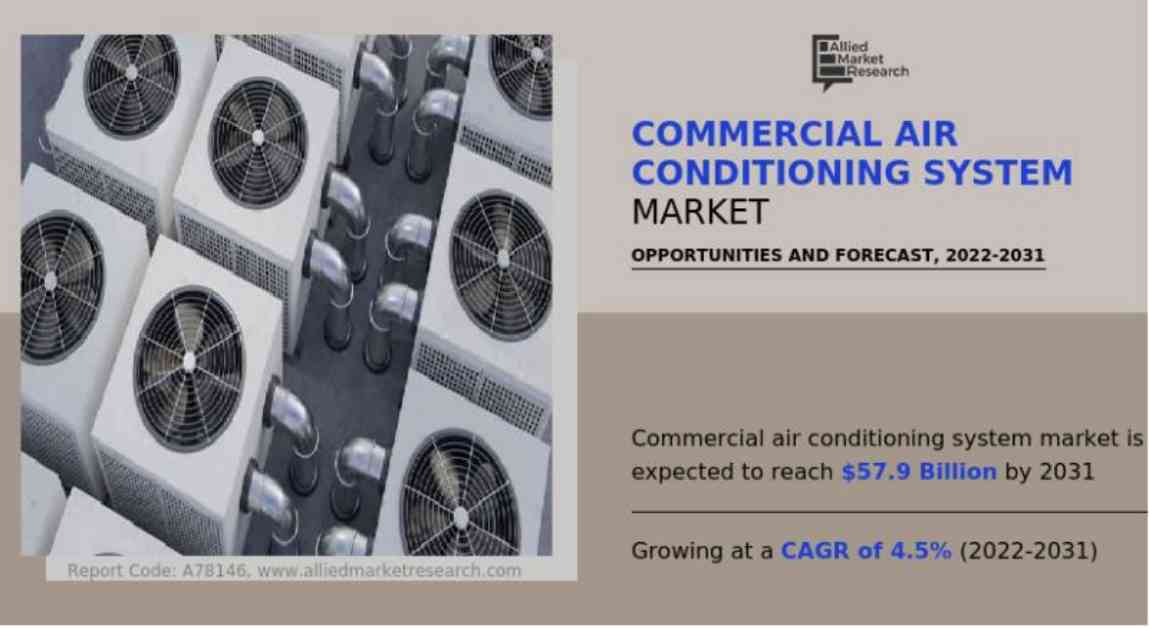The commercial air conditioning system market has been experiencing significant growth, with a value of $38.3 billion in 2021 and an estimated reach of $57.9 billion by 2031. This growth is attributed to the increasing demand for energy-efficient systems and government regulations aimed at reducing carbon emissions. One of the key trends in the market is the adoption of Variable Refrigerant Flow (VRF) systems, which are known for their energy-saving capabilities and cost-effectiveness.
The Asia-Pacific region has been leading the market share in 2021 and is expected to maintain its position in the forecast period. Key players in the market include Carrier, DAIKIN INDUSTRIES, Ltd, FUJITSU GENERAL, and others. The expansion of the construction sector, particularly in developing countries, has also played a significant role in driving the demand for commercial air conditioning systems.
Smart buildings and building automation systems are another driving force behind the market growth. These systems allow for real-time monitoring and management of HVAC systems, leading to increased energy efficiency, cost savings, and improved occupant comfort. However, one of the challenges facing the market is the environmental impact of commercial air conditioning systems, particularly in terms of refrigerant usage.
Refrigerants used in these systems can contain substances that are harmful to the environment and contribute to climate change, global warming, and ozone depletion. Refrigerants like chlorofluorocarbons (CFCs) and hydrochlorofluorocarbons (HCFCs) have been phased out due to their detrimental effects on the ozone layer. Despite these challenges, the market is expected to grow as consumers increasingly seek air conditioning systems that offer better comfort, energy efficiency, and customization.
The COVID-19 pandemic has also had a significant impact on the commercial air conditioning system market, with companies facing operational challenges due to import-export restrictions, lockdowns, and labor shortages. Social distancing norms and production constraints in countries like China, India, and the U.S. have further affected the global market.
Looking ahead, the market is expected to continue growing, with the VRF sub-segment leading the way in terms of type, the retrofit sub-segment showing rapid growth in installation type, and the office and buildings sub-segment leading in end-user applications. As the market evolves, businesses that specialize in smart technologies and energy-efficient solutions are well-positioned to capitalize on the growing demand for commercial air conditioning systems.
In conclusion, the commercial air conditioning system market is poised for growth, driven by factors such as energy efficiency, government regulations, and the increasing demand for smart technologies. While challenges such as environmental concerns and the impact of COVID-19 persist, the market presents opportunities for innovation and sustainable growth in the coming years.

